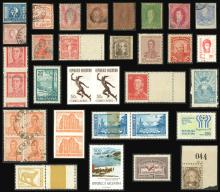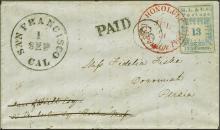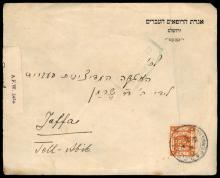The Stamp That Made the Panama Canal in Existence Today!
Published

It is rather unusual that one of the worlds’ greatest engineering marvel - the Panama Canal - came into existence with the help of some small pieces of adhesive papers. In truth, it was not just some mere pieces but rather postage stamps made during the period. Originally, the plan in the construction of the navigational link to connect the Caribbean Sea towards the Pacific Ocean was not in the Panama area, rather it was in Nicaragua. This is the story of how the diversion came to be.
Initial Construction Efforts
The great developer Ferdinand de Lesseps, a French engineer from the 19th Century, was responsible for the construction of the the Suez Canal. His accomplishment in joining the Rea Sea and the Mediterranean Sea has made a great reduction in the distance and time to sail from the West part to the East. After that, he started to repeat his successful project by building the Panama Canal at sea level in the year 1880. However, the venture was totally hindered by epidemics such as the yellow fever and malaria. It even took the lives of as much as 22,000 workforces. Eventually, the United States continued the project of a locking non-sea level canal in 1914. But this undertaking did not immediately start and this is where the stamp played its important role.
The Nicaraguan Postage Stamp
As the United States seized the task, the Canal Commission recommended at first an alternative route through Nicaragua. However, Philippe Bunau-Varilla, an engineer and soldier considered the Nicaragua route to be dangerous because of earthquake and volcanic activities in the area. He was then convinced that the construction of the canal would encounter hostilities, which caused him to lobby to the US Congress for the Panama route instead.
However, it was nature that made a certain event swing matters to his favor. Towards 1902, Mount Momotombo of Nicaragua erupted, causing massive destruction particularly in the route that was to be taken by the canal. The Nicaraguan government desperately tried to keep the details secret from the US government. However, Bunau-Varilla was following the case through. He was looking for a way to persuade the US government of his cause, and was given a break when he saw among his letters a Nicaraguan stamp printed two year previous to that date. The stamp's subject was the Momotombo volcano emitting smoke. Part of the scene depicted was the Lake Nicaragua.
He immediately purchased about 90 copies of this particular stamp in different values. Then, he attached each stamps to a piece of paper with a caption stating ‘An official witness to the volcanic activity in Nicaragua’. This resulted in a vote of 42 to 32 in favor of the Panama Canal in place of the Nicaragua Canal. He continued with his actions by journeying to New York where he bought 500 additional copies of these stamps and sent them to the members of the US House of Representative. That resulted in a roaring victory on his Panama cause with just eight votes in favor of the Nicaragua Canal.
In 1904 began 10 years of construction to complete the Panama Canal. That was how the Panama Canal came into existence - benefitting countless individuals in their travels as well as vast advantages in other forms.
Knowing the story gives us a new perspective on this most challenging engineering venture in the history, which owes its completion - in part - to a mere postage stamp. In life, there are many things that we consider as small and irrelevant. Normally, we take them for granted. However, if we look closely at our lives we can find small factors that have somehow made a great effect beyond our expectations.








